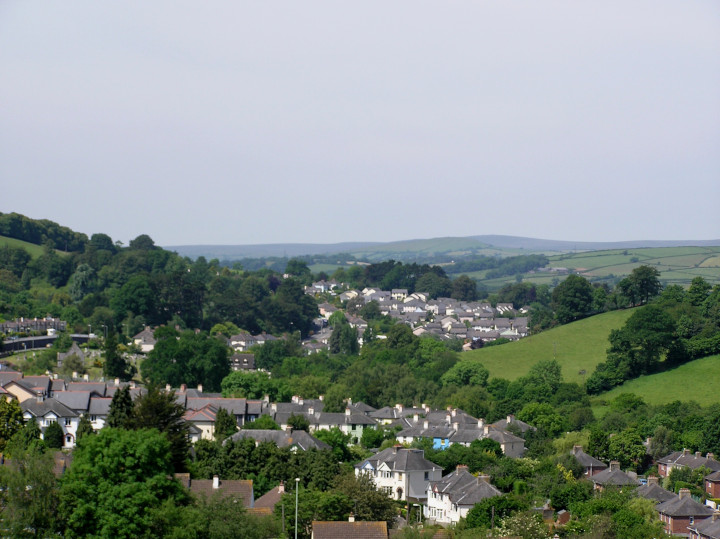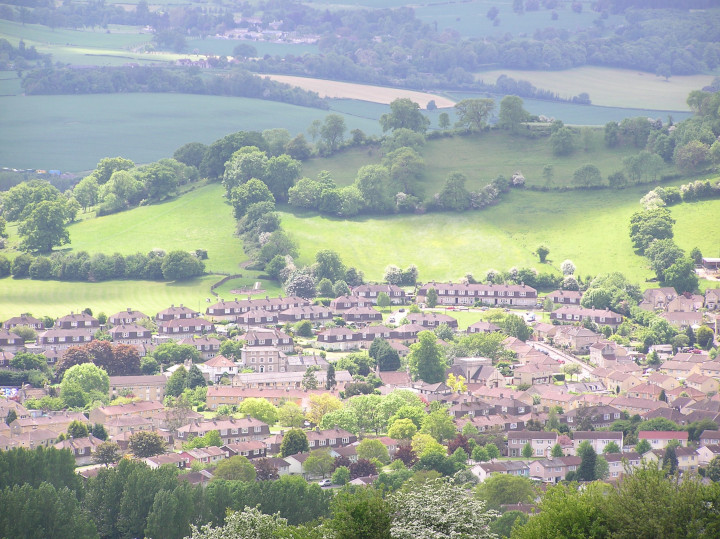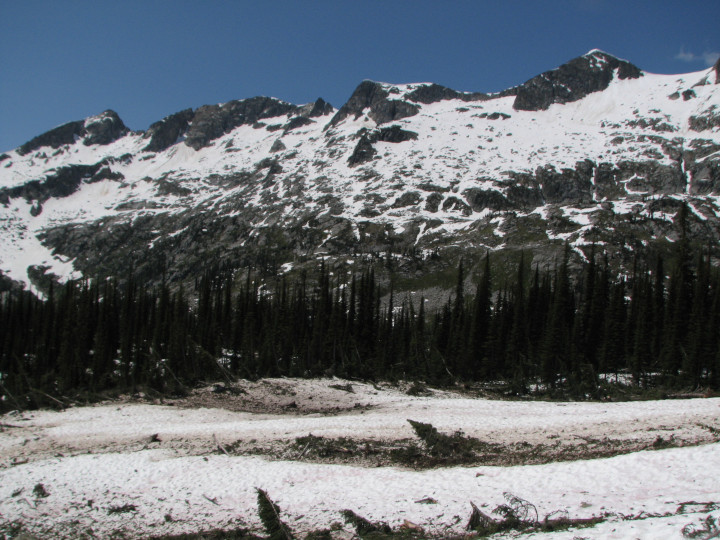
Nature, science, language, values, feral beliefs...
Entries for March 2024

Invasive Narratives
Last week I mentioned reports of large numbers of giant sequoias currently growing in the United Kingdom - apparently many times more than still live in their native California. There was a suggestion that these trees are not an invasive species because they don't seem to be naturally reproducing. At least, not yet. Being large and attractive to humans has been effective, however, with regard to sheer numbers. Of course, it is not possible to import an ecosystem, so other California plant and animal species associated with giant sequoias have not gone along for the ride. That would be a rather different sort of invasiveness.
Many plants, particularly agricultural crops, that have been spread around the world are capable of natural reproduction in their widespread locations and have not out-competed native species. Potatoes, or apples, or even corn, for example. These are desirable foods, and are of course profitable to cultivate. Their proliferation and cultivation by humans does displace native species - often on a massive scale - but they are rarely called invasive. Efforts to feed 8+ billion humans do result in some inevitabilities. There are even species that are designated as "invasive", but are welcomed because they are expected to provide useful "services", like pest control.
When people observe "something", they generally use whatever narratives they have immediately available in order to think about it or to communicate aspects of that "something" with others. One possible narrative about the many giant sequoias that have been scattered around the UK, Europe, Australia, etc. is that they could provide "insurance" for the species if the climate crisis leads to their demise in California. This sort of narrative seems pathologically optimistic to me - if the climate crisis causes the eradication of California's giant sequoias, it won't stop there.
A related narrative suggests that giant sequoias grow so well in the UK that they could be planted in much larger numbers. These obviously couldn't be forests, but... Apparently the wood of mature giant sequoias is too brittle and fibrous to be useful for building, but the wood from immature trees (maybe <100 years old) is much stronger and very useful. Imagine planning for even a century hence, without really confronting the volatility of the present. But then, usually so-called "planning" for something decades in the future is little more than a story we tell ourselves in an attempt to feel better.

Invasive Landscapes
Recently there has been a mini-flurry of articles announcing that there are currently an estimated 500,000 "giant redwoods" growing in the United Kingdom. That's quite an estimate. This information appeared in The Conversation, and then in The Guardian UK and ars Technica - all of which pointed out that this large number of trees far surpassed the approximately 80,000 giant sequoias growing naturally in the foothills of the Sierra Nevada in California. Some of the reporting seemed a bit hazy about the distinction between giant sequoias (Sequoiadendron giganteum) and coast redwoods (Sequoia sempervirens), but to think that such a large number of individual giant sequoias have been imported and planted in the UK over the last century and a half is at least surprising.
Neither the articles in the media, nor the Royal Society journal article on which they are based, provide any details about how the estimate of the number of giant sequoia trees in the UK was derived. The large number of trees involved did merit a brief mention of the question of invasive species, but that was tempered by the observation that the sequoias aren't (yet?) reproducing naturally in the UK. (The giant sequoias only reproduce from seed from mature trees, but the coast redwoods can also reproduce vegetatively from shoots.) Predictably, the media accounts noted that these are all very BIG trees: the tallest and most massive in the world. They were presented as potentially useful trees too - they can sequester a lot of carbon and perhaps help mitigate global heating. Groves of them can indeed be cool, calming refuges for people who seek them out.
It is interesting that giant sequoias seem to grow so well in the UK. The climate, terrain and ecosystems there are very different from the western slopes of the Sierra Nevada in California where they now naturally occur. As reported, they were first imported to the UK in the 1850s as expensive status symbols by wealthy individuals who planted them around their estates, and many have been planted since in parks and gardens. It seems mildly ironic (or maybe symbolic) that what attracted their early collectors - the great size of the sequoias - could never be achieved in a human lifetime.
When we mapped the hundreds of giant sequoias planted around Victoria, British Columbia, the number of trees was more than we initially expected. To an extent, even famously large trees can become hidden in plain sight in a city. Of course, trees scattered throughout an urban landscape mean something quite different than a forest of the same species growing in their natural habitat. People do move things around, for a variety of reasons, and now there do appear to be more giant sequoia trees spread around the United Kingdom than remain in California - no forests, of course. That would take a while.

Why Ask Why
We have a pretty good idea how the giant
sequoias and coast redwoods ended up in Victoria, British
columbia. They were planted there at various times by people who
acquired seedlings from California, where they still naturally
occur. We have a much hazier idea of how the alpine water voles
I mentioned last week came to be where they currently live high
in the north western mountains. Until the final retreat of the
last glacial ice around 10,000 years ago, none of the habitat
they require would have begun to exist. Perhaps they followed
the grasses and shrubs and forests north as the thick ice
disappeared.
We can ask "why" the giant sequoias are now in Victoria: in it's simplest form, the answer is because some people wanted to plant them there. (Humans have moved them there unnaturally, for various personal reasons.) We could also ask "why" the alpine water voles are living where they are, but that question is both much more problematic, and more potentially instructive. In it's most direct form, the answer might be that the voles just ended up there naturally, but that seems to skip over quite a lot. The use of the "why" question might seem innocuously equivalent in the two questions, but it is not.
All "why" questions can be pursued into an interminable muddle, but historically people have had a contentious involvement with "why" questions concerning the concept of evolution. Once such questions slide away from poorly conceived "how did this happen" queries, thinking tends to deteriorate. Studies of the genetics of alpine water voles indicate that they have been widespread in the northern hemisphere for perhaps as long as 14 million years, and have now adapted to a diversity of current habitats. That such a small mammal could spread so widely despite multiple glaciations, and now populate alpine habitats that are buried in snow for much of the year, is certainly remarkable. Of course it took a while. People understandably have difficulty appreciating what a million years really means for processes that evolve.
When we ask "why" questions about human actions, we have at least some common experience to apply to our reasoning (however misleading that can often be). We may have some evidence of other people's purposes to guide us. Creatures like water voles cannot reasonably be said to have the sorts of purposes humans have, which shouldn't be surprising because they don't live at all like humans do. Asking questions like "why" alpine water voles live where they do is often not just a way of searching for details of "how" they ended up there after millions of years of morphological, geological, environmental, and climatic changes.
We've got this word "why" hanging around. It's a perfectly acceptable word, at least in some situations. It can provide satisfying results, and we get used to using it. When we ask questions about evolution, and nature, this can result in considerable confusion. Nature and evolution have no "purposes" in the sense that humans have come to understand the term. That makes some people uncomfortable. Perhaps that is partly because they don't know enough about how old and complex the processes they are part of really are.
We can ask "why" the giant sequoias are now in Victoria: in it's simplest form, the answer is because some people wanted to plant them there. (Humans have moved them there unnaturally, for various personal reasons.) We could also ask "why" the alpine water voles are living where they are, but that question is both much more problematic, and more potentially instructive. In it's most direct form, the answer might be that the voles just ended up there naturally, but that seems to skip over quite a lot. The use of the "why" question might seem innocuously equivalent in the two questions, but it is not.
All "why" questions can be pursued into an interminable muddle, but historically people have had a contentious involvement with "why" questions concerning the concept of evolution. Once such questions slide away from poorly conceived "how did this happen" queries, thinking tends to deteriorate. Studies of the genetics of alpine water voles indicate that they have been widespread in the northern hemisphere for perhaps as long as 14 million years, and have now adapted to a diversity of current habitats. That such a small mammal could spread so widely despite multiple glaciations, and now populate alpine habitats that are buried in snow for much of the year, is certainly remarkable. Of course it took a while. People understandably have difficulty appreciating what a million years really means for processes that evolve.
When we ask "why" questions about human actions, we have at least some common experience to apply to our reasoning (however misleading that can often be). We may have some evidence of other people's purposes to guide us. Creatures like water voles cannot reasonably be said to have the sorts of purposes humans have, which shouldn't be surprising because they don't live at all like humans do. Asking questions like "why" alpine water voles live where they do is often not just a way of searching for details of "how" they ended up there after millions of years of morphological, geological, environmental, and climatic changes.
We've got this word "why" hanging around. It's a perfectly acceptable word, at least in some situations. It can provide satisfying results, and we get used to using it. When we ask questions about evolution, and nature, this can result in considerable confusion. Nature and evolution have no "purposes" in the sense that humans have come to understand the term. That makes some people uncomfortable. Perhaps that is partly because they don't know enough about how old and complex the processes they are part of really are.

A Break from Text-Generated Un-realities
Between about 1,000 and 3,000 metres of
elevation, in western mountain ranges in North America, small
aquatic rodents called water voles live along small alpine
meadow streams. They are not easy to see - partly because they
are largely nocturnal, but I think also because they are so
unobtrusive compared to the grandeur of their surroundings. They
are very good swimmers, and entrances to their burrows are
located underwater in the stream banks. It is usually easier to
spot some burrow entrances than the voles themselves.
Once you realize they are there, swimming in snow-melt-fed streams where the frozen grip of winter can last 8 months each year, you might well wonder how they manage. Apparently, with a high metabolic rate and a very short lifespan, each individual does not manage for very long. They are active all winter in tunnels they dig under the snow, and then most die before the next winter. If you are skiing or hiking early in the season when there is still significant snow cover, you might be passing above busy water voles below (and also rock-dwelling North American pikas, little mammals related to rabbits). As they say, out of sight, out of mind. And look: majestic mountains!
I wonder less about what seems majestic to people (training seems to have a lot to do with it) than I wonder how so many remarkable species are so little known. On the other hand, considering common human behaviour, perhaps it is just as well that some vulnerable creatures are not subjected to stomping crowds of gawkers. As things stand, it would be difficult to integrate a more complete understanding of some other creatures lives with the goals and aspirations of most humans. But knowing that they live their lives in such apparently inhospitable surroundings might stimulate someone's imagination.
Are their surroundings really "inhospitable"? Anthropocentrism might lead us to think so, but evolution indicates otherwise. Many creatures live their lives in environments where humans could not - from the ocean depths to the highest mountains - but it would be silly to think that they would rather be more "comfortable". It is a wonder that creatures can live in such places because the places themselves are amazing, not just because the creatures can do something that humans cannot do. It is a wonder that there are so many many different kinds of habitats that other creatures have adapted to.
There is no reason to suppose that alpine water voles might speculate about how humans manage to live the way they do.
Once you realize they are there, swimming in snow-melt-fed streams where the frozen grip of winter can last 8 months each year, you might well wonder how they manage. Apparently, with a high metabolic rate and a very short lifespan, each individual does not manage for very long. They are active all winter in tunnels they dig under the snow, and then most die before the next winter. If you are skiing or hiking early in the season when there is still significant snow cover, you might be passing above busy water voles below (and also rock-dwelling North American pikas, little mammals related to rabbits). As they say, out of sight, out of mind. And look: majestic mountains!
I wonder less about what seems majestic to people (training seems to have a lot to do with it) than I wonder how so many remarkable species are so little known. On the other hand, considering common human behaviour, perhaps it is just as well that some vulnerable creatures are not subjected to stomping crowds of gawkers. As things stand, it would be difficult to integrate a more complete understanding of some other creatures lives with the goals and aspirations of most humans. But knowing that they live their lives in such apparently inhospitable surroundings might stimulate someone's imagination.
Are their surroundings really "inhospitable"? Anthropocentrism might lead us to think so, but evolution indicates otherwise. Many creatures live their lives in environments where humans could not - from the ocean depths to the highest mountains - but it would be silly to think that they would rather be more "comfortable". It is a wonder that creatures can live in such places because the places themselves are amazing, not just because the creatures can do something that humans cannot do. It is a wonder that there are so many many different kinds of habitats that other creatures have adapted to.
There is no reason to suppose that alpine water voles might speculate about how humans manage to live the way they do.